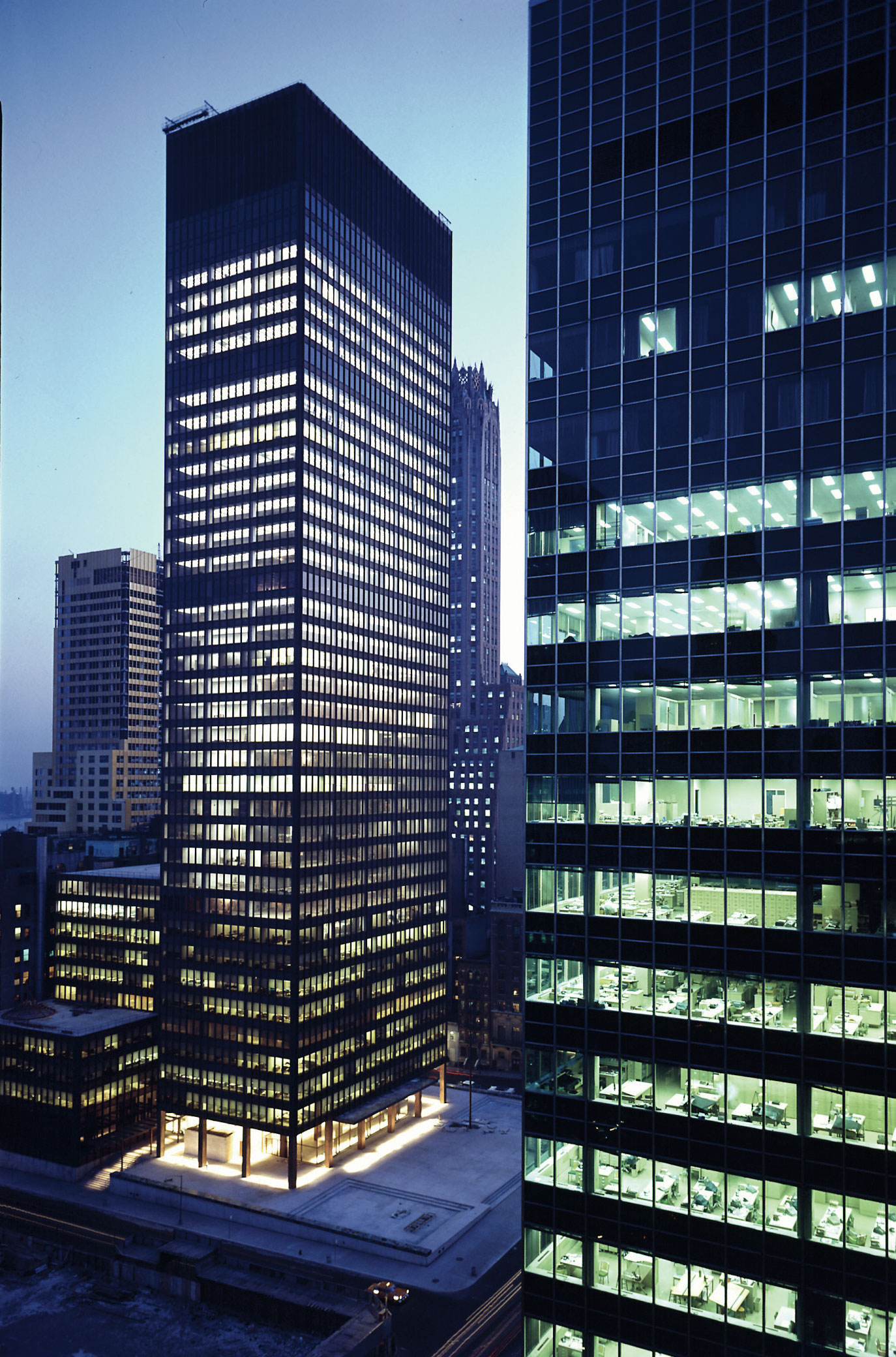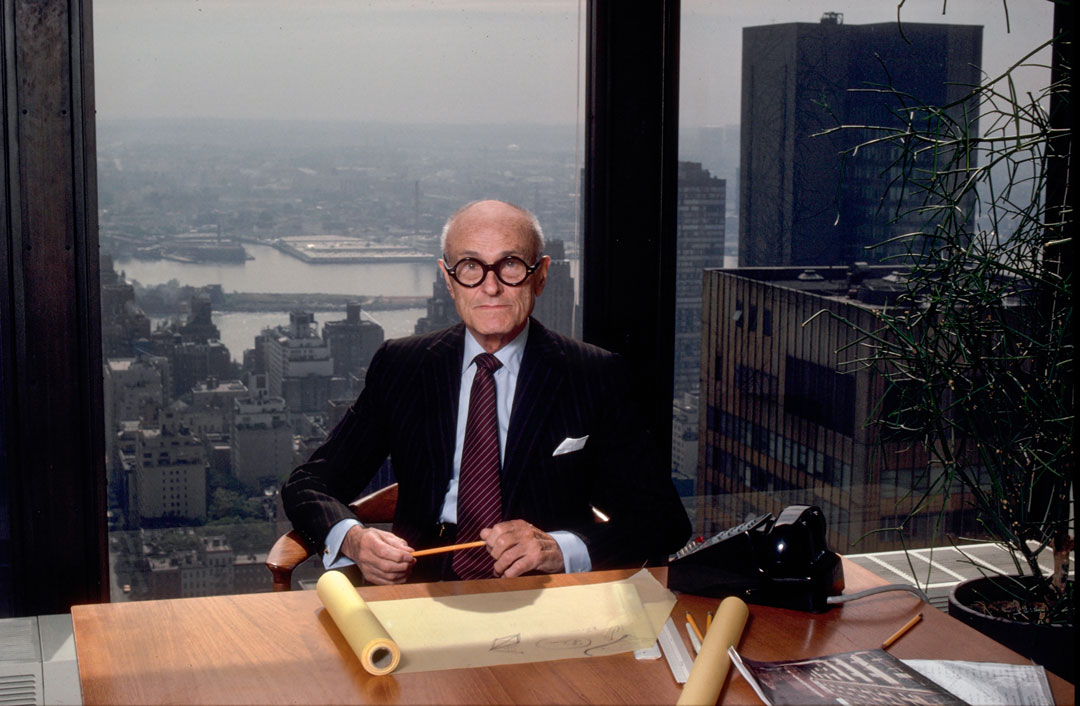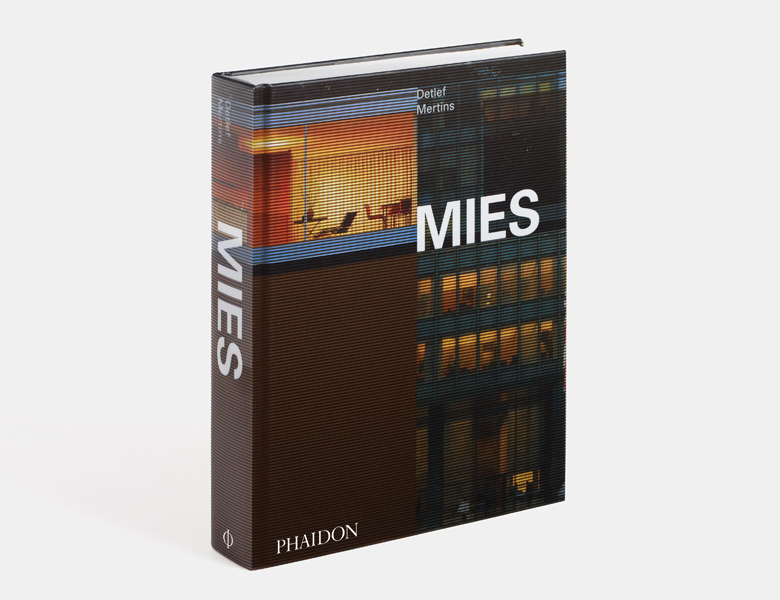
Philip Johnson and the making of the Seagram Building
Mies’s masterpiece might never have towered over NYC, had Johnson not put in some skillful, social groundwork
In 1930, Ludwig Mies van der Rohe, the last director of the Bauhaus, accepted his first US commission: an apartment interior at 424 E. 52nd Street, in Manhattan. The job was modest, and left little room for innovation; much of the work was actually undertaken by Mies’s long-standing collaborator, Lilly Reich.
28 years later, now an American citizen and a leading figure within the modernism movement, Mies completed another project, just five blocks to the west of that first work on US soil. This later undertaking, The Seagram Building, was, by contrast, somewhat more substantial. Architecture critic Herbert Muschamp described it as “the millennium’s most important building,” while the US architectural writer Ian Volner, having quoted Muschamp in our new book Philip Johnson: A Visual Biography, adds that it “was indeed as influential as any constructed in living memory.”
![Interior view of the Pool Room in the Four Seasons restaurant in the Seagram Building, [Seagram Building, Philip Johnson and Ludwig Mies van der Rohe, New York, 1958]. Photo Jennifer Calais Smith](/resource/fourseasons-interior-ii.jpg)
How did Mies manage to go from apartment makeovers to this landmark, 516 ft (157 m) paean to glass and steel? The answer lies in Volner’s book.
Johnson, who commissioned that early apartment and assisted Mies with this later commission, wasn’t the world’s greatest architect, yet he was, as Volner notes, with admiration and candor, “American architecture’s greatest chinwag-exhibitionist.” And, in this capacity, he aided the German architect no end. It was Johnson who first suggested Mies to Phyllis Lambert – the woman responsible for finding an architect for the project.

“[The Museum of Modern Art’s director] Alfred Barr turned Phyllis Lambert over to me,” Johnson is quoted as saying in Volner’s book. “She came and said, ‘How do I find an architect?’ I said, ‘I’ll drive you around the country, and we’ll find one.’ Then I sort of inched her over until she liked Mies the best. I didn’t say, ‘You’ve gotta pick Mies,’ but I was influential. That’s power, huh?”
Yet Johnson didn’t just possess power; he also had great foresight and taste; having first met Mies in the summer of 1930, Johnson championed the architect, not only commissioning work from him, but also staging an exhibition in his honour, and drawing heavily on Mies’s style when contracting his own weekend retreat, the Glass House. Mies repaid the favour by appointing Johnson as his assistant architect on the project which would reshape part of Manhattan in the modernist style.

“The City of New York altered its zoning ordinances to encourage other architects to copy Mies’s ample plaza, and soon all of Park Avenue was dotted with similar structures, to say nothing of the countless lookalikes that sprang up all across the country,” writes Volner.
“As the de facto epicenter of American architecture, Seagram was a natural place for Philip to set up shop—especially given his intense personal connection to its design, which he’d overseen after Mies ran into licensing difficulty. Along with many of the interior details, Philip was chiefly responsible for the famed Four Seasons restaurant downstairs: his favored spot for lunches, dinners, and gossipy tête-à-têtes, it became as much a headquarters to him as his office upstairs.”
It’s a fitting legacy for so socially dynamic an architect. Johnson may not have been a great modernist like Mies, but he possessed skills and connections that enabled the erstwhile Bauhaus director to scrape the skies of New York City.

For more on Philip Johnson's life and sizable architectural legacy, order a copy of Philip Johnson: A Visual Biography; and for more on Mies take a look at our newly reissued title, Mies.
